Flying In Circles To Discover Adaptations For The Cold
The SciFri team learns what it takes for some creatures to live in extreme cold environments at a cryobiology lab.
Some like it hot, but others like it cold—extremely cold.
There are a surprising number of creatures that have discovered the secrets to surviving in cold environments, from Alaskan wood frogs to the larvae of the Antarctic tiny, flightless midge. For J.D. Gantz, doctoral candidate at the cryobiology lab at Miami University in Ohio, one of the subjects of his research whirls around endlessly in circles. In order to understand how low temperatures affect insect muscles, he chills flesh flies and lets them ride on a “fly treadmill”—a rotating apparatus that allows him to measure a fly’s flight velocity.
When Science Friday hit the road to Oxford, Ohio for a live show, radio producer Christie Taylor along with digital producer Lauren Young explored Miami University’s cryobiology lab and learned about the applications of Gantz’s research. Step into the lab with SciFri by scrolling through the photos below while listening to the audio diary.
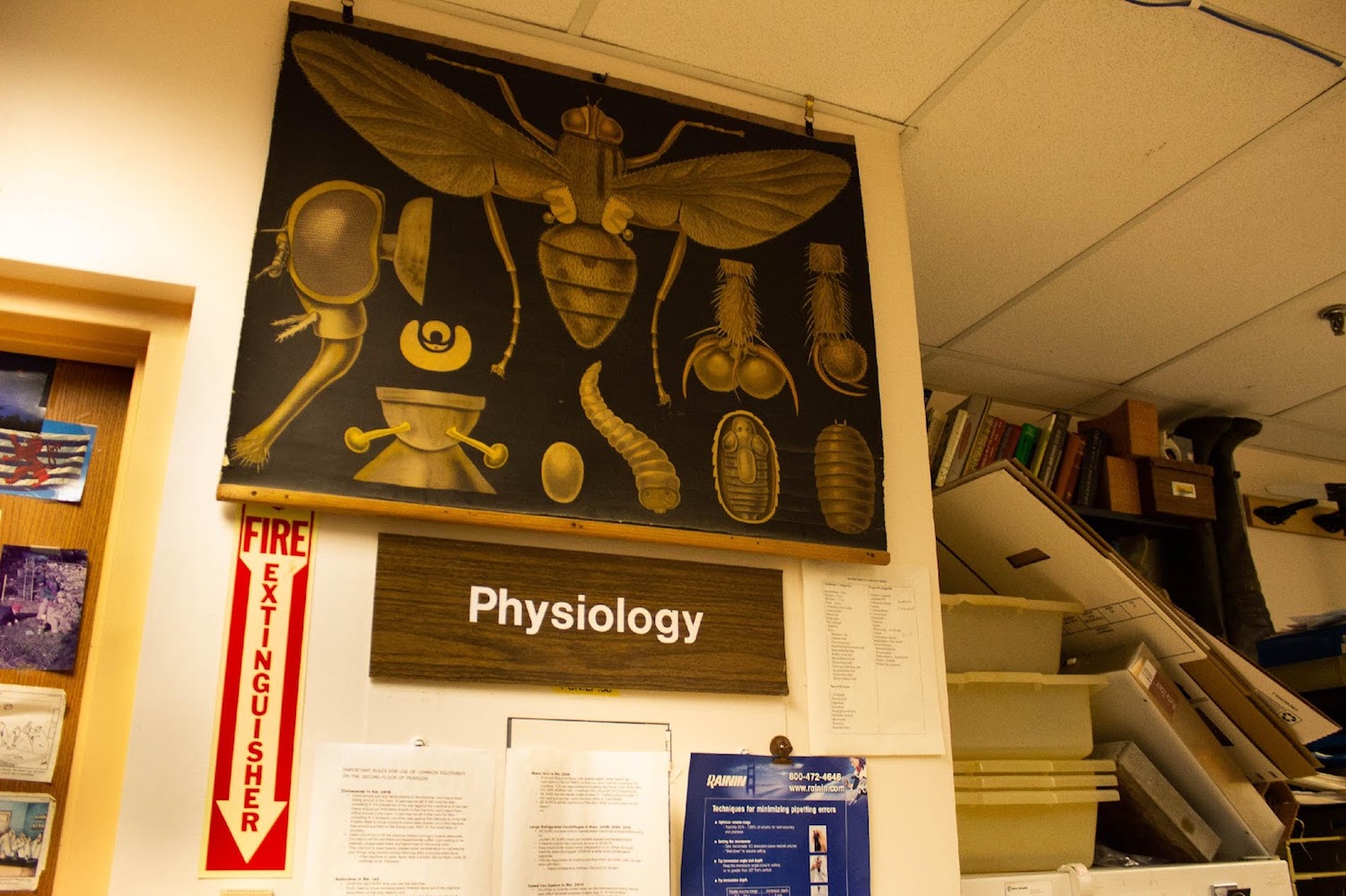
Photo by Lauren J. Young
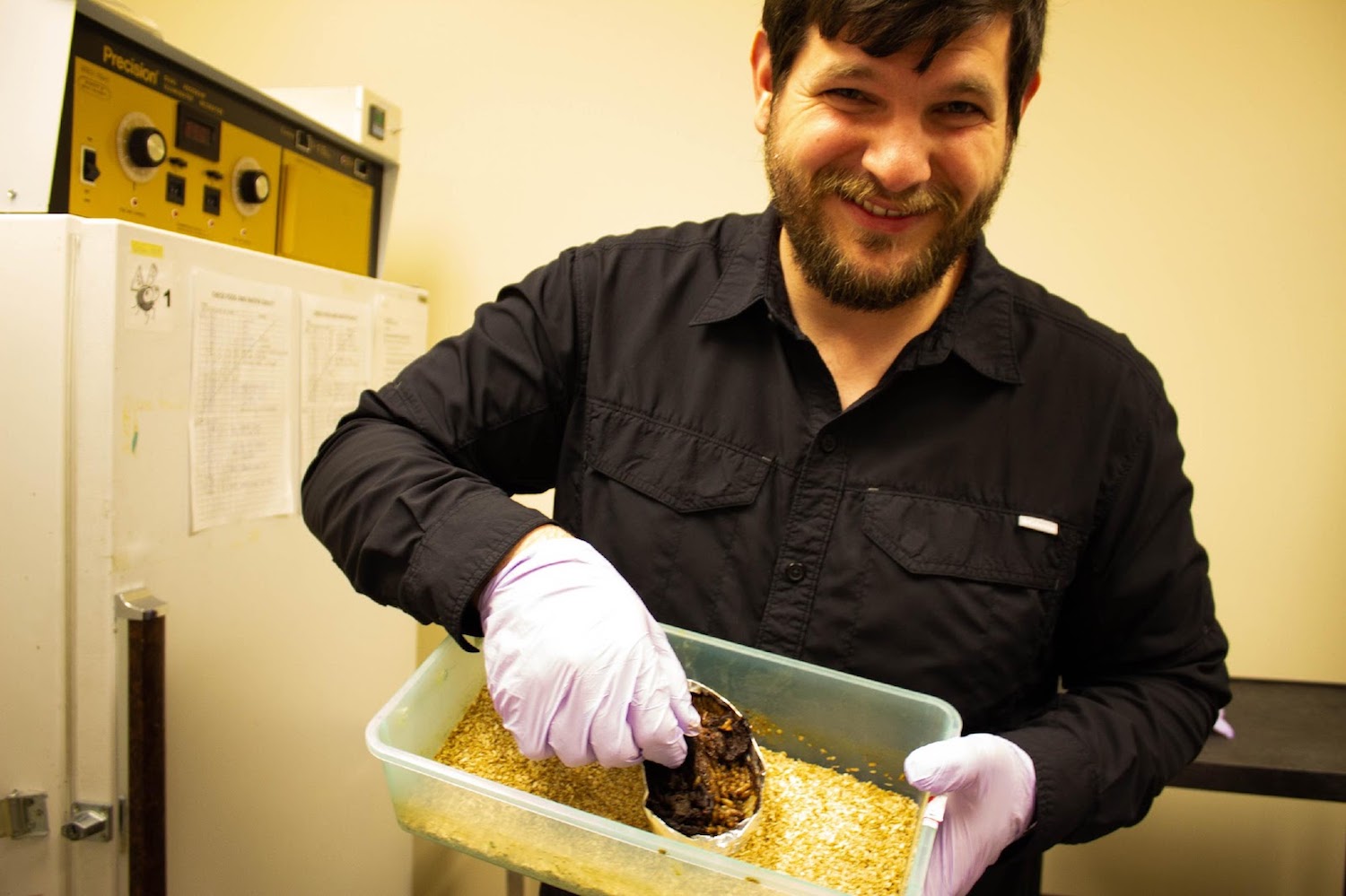
J.D. Gantz. Photo by Lauren J. Young
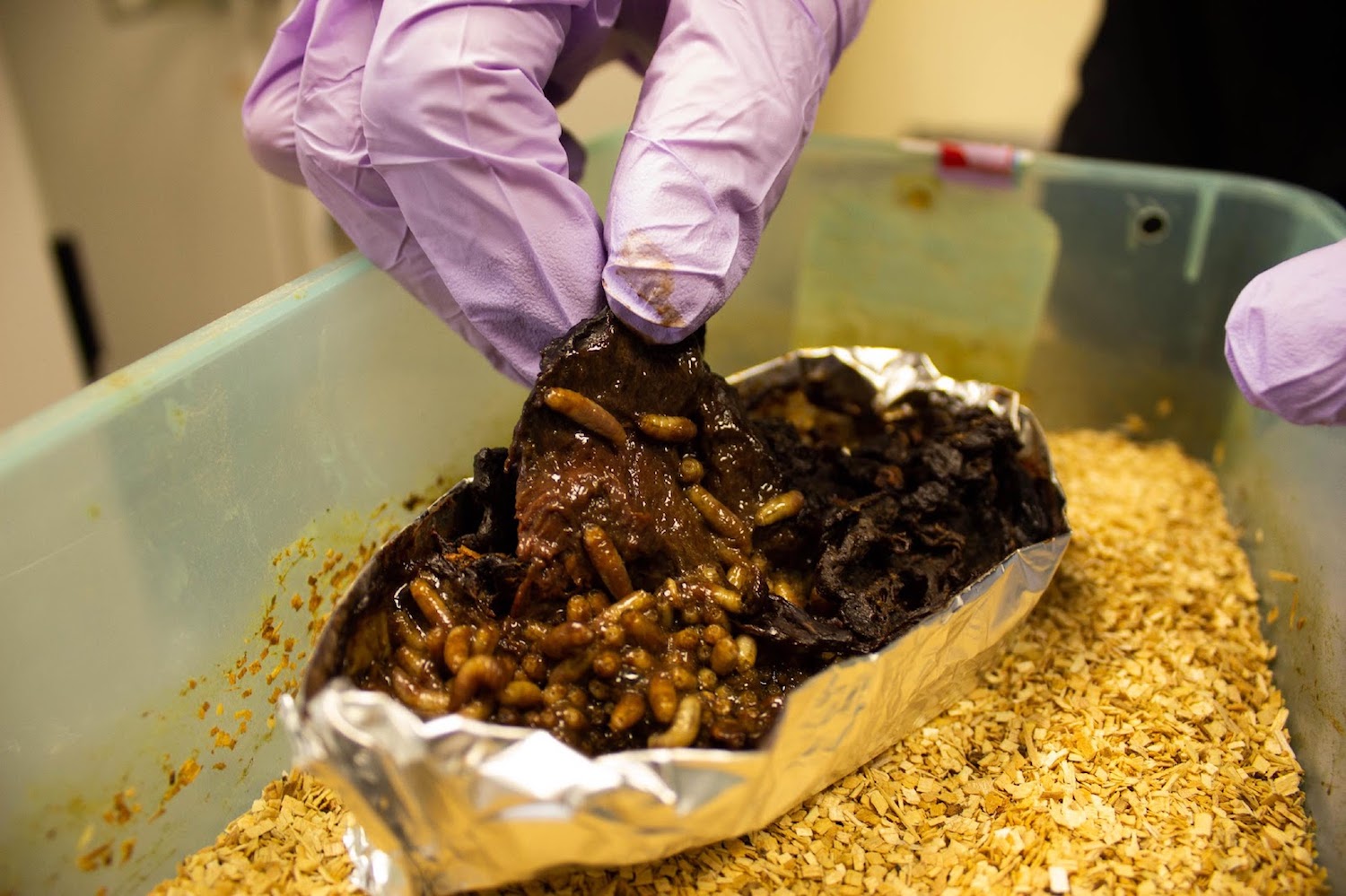
“These don’t actually smell as terrible as they can sometimes,” says Gantz. Flesh fly maggots chow down on dried liver. They develop in decaying flesh. Photo by Lauren J. Young
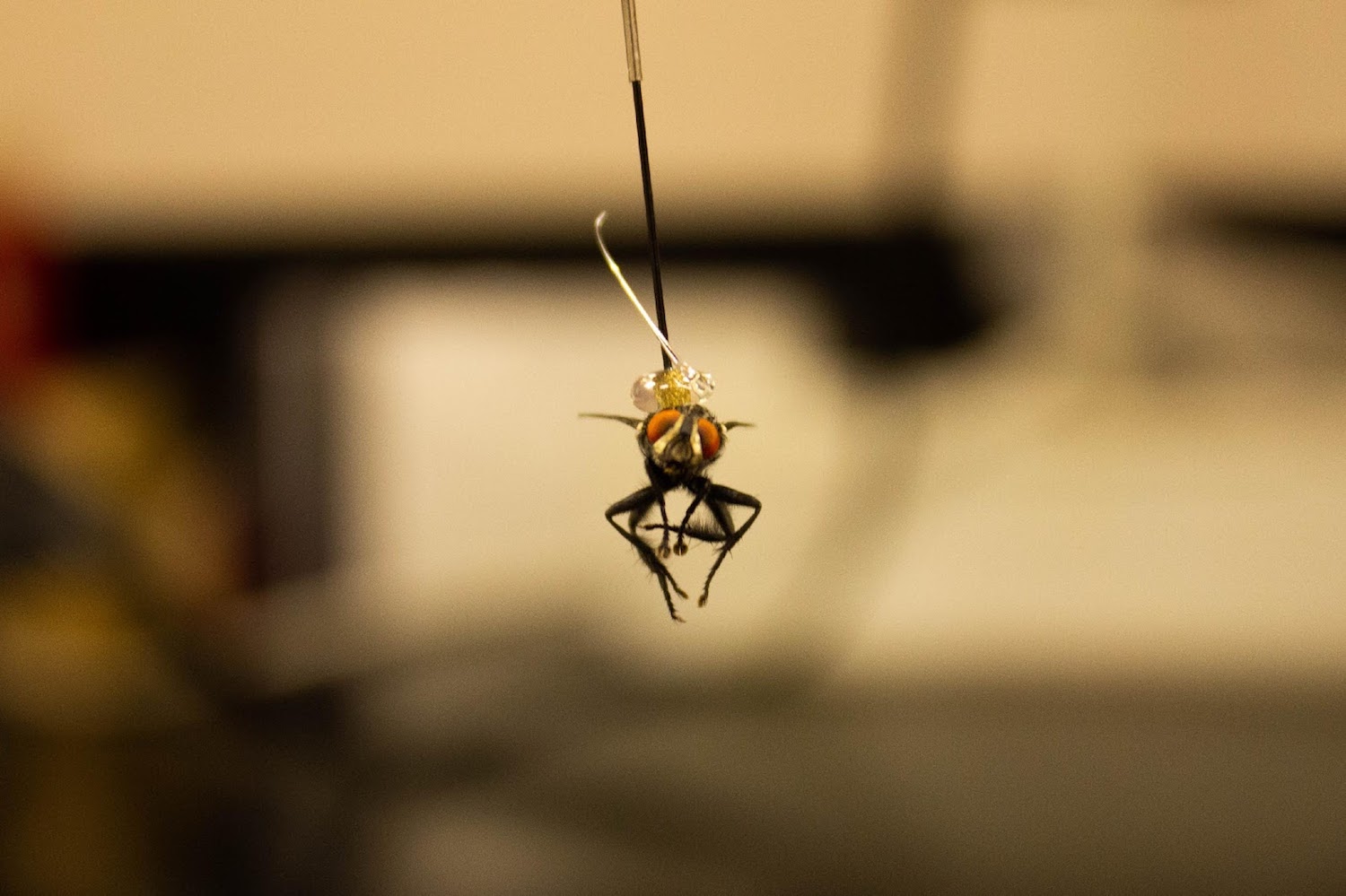
Flesh fly, of the family Sarcophagidae, native to Ohio. Photo by Lauren J. Young
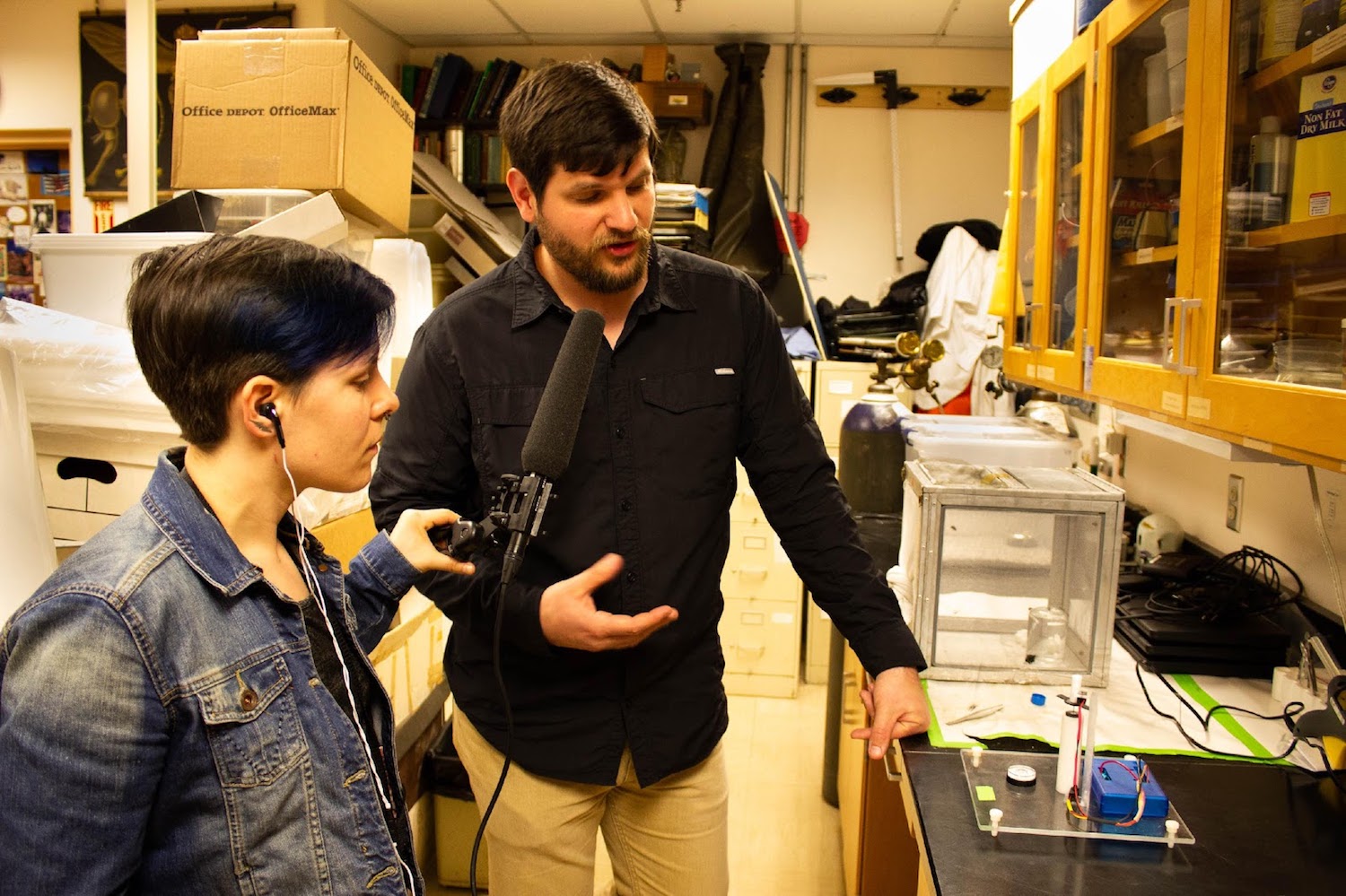
Gantz explains the fly treadmill to SciFri radio producer Christie Taylor. Photo by Lauren J. Young
After chilling the fly cage in the cold room for a few minutes to slow them down, Gantz will use a hot glue gun to attach a fly to the arm of the treadmill. Photo by Lauren J. Young
One of Gantz’s test subjects ready to work out on the treadmill. Photo by Lauren J. Young “In the course of four hours, I’ve had a couple individuals fly over 20 kilometers,” says Gantz. Filmed by Lauren J. Young
“I’m just totally impressed by [insects’] ability to adapt to all sorts of crazy environments.” Photo by Lauren J. Young
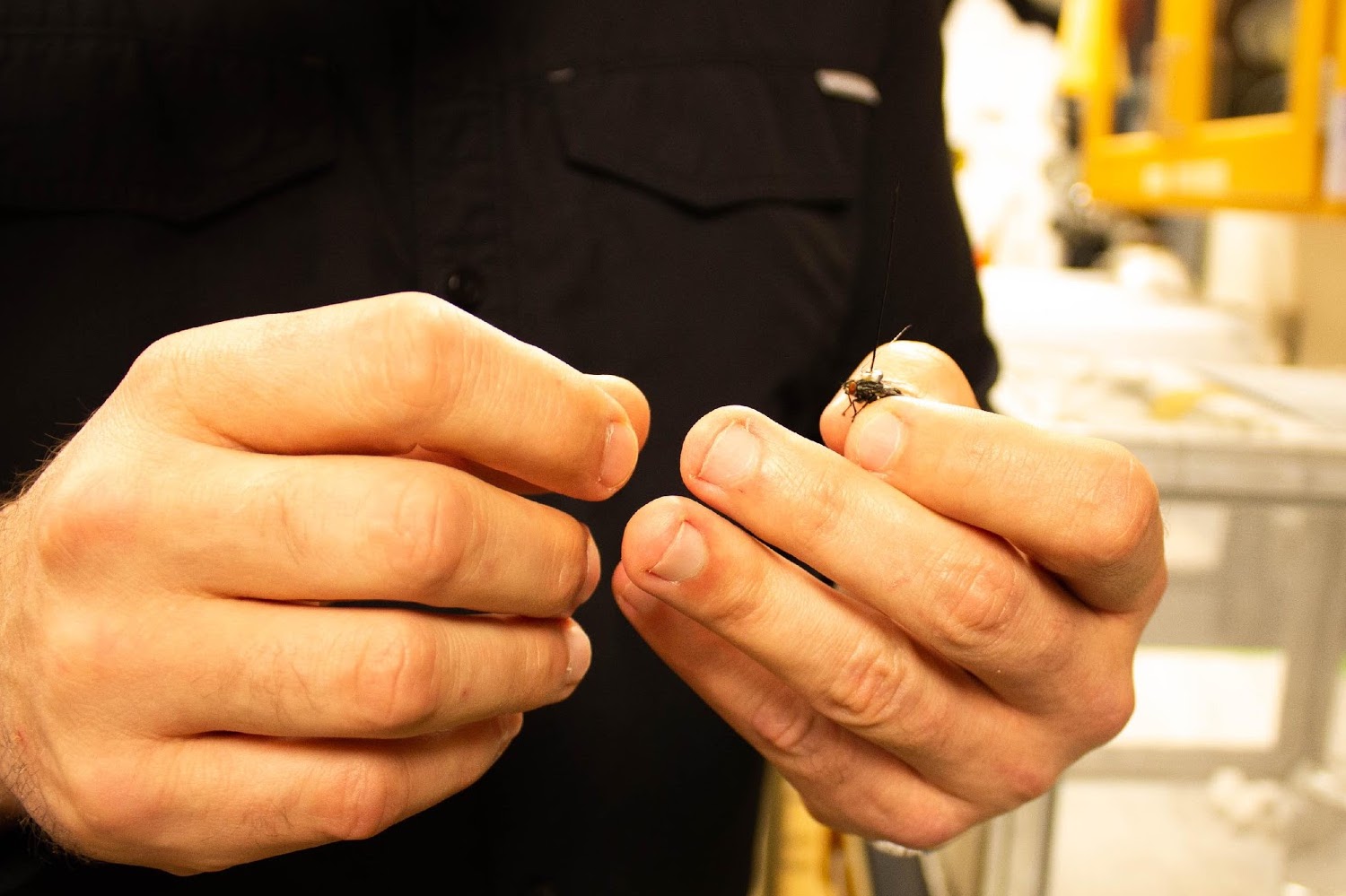
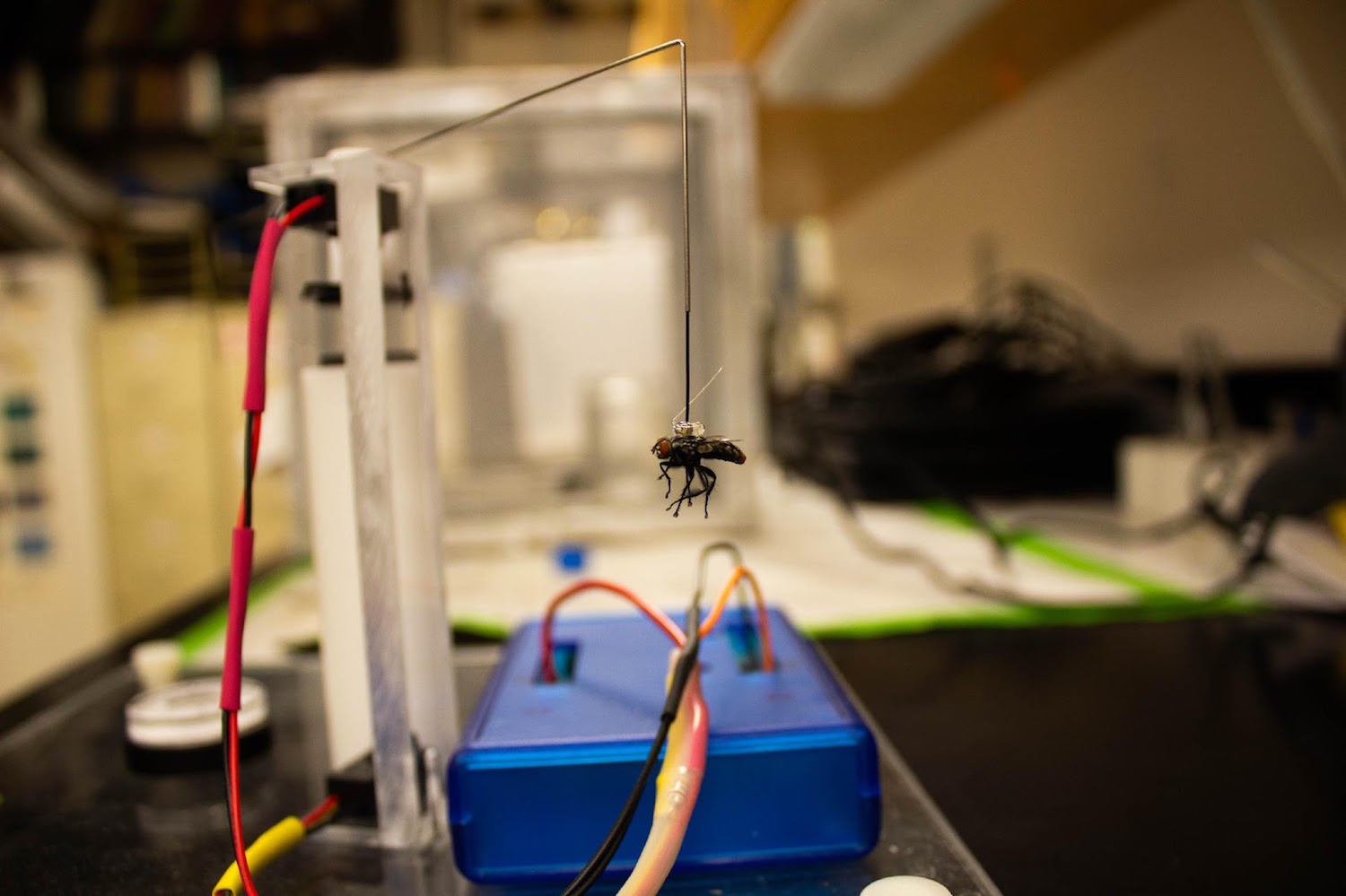


Audio postcard by Christie Taylor
Photos and words by Lauren J. Young

Christie Taylor was a producer for Science Friday. Her days involved diligent research, too many phone calls for an introvert, and asking scientists if they have any audio of that narwhal heartbeat.
Lauren J. Young was Science Friday’s digital producer. When she’s not shelving books as a library assistant, she’s adding to her impressive Pez dispenser collection.